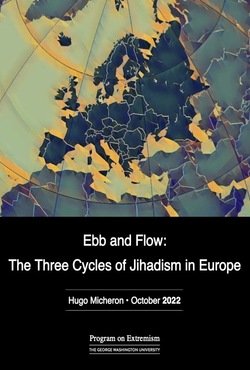Ebb and Flow: The Three Cycles of Jihadism in Europe
By: Hugo Micheron
The trial of the November 2015 Attacks in Paris that ended in June 2022 in part symbolizes the end of an important phase of jihadism in Europe. But jihadism continues to pose an intellectual and political challenge to European societies. The need to understand it is urgent, but the task is made difficult for two reasons. First, Islamist militancy has penetrated the Western European media space in the last few years, and now provides the backdrop for a muddled public debate on immigration, the place of religion, and terrorist violence. Since the 9/11 attacks on the United States, nearly 150 Islamist attacks have assailed Europe causing 800 deaths and nearly 5,000 injuries. Hundreds of other attempts have been thwarted from Brest to Vienna, from Glasgow to Milan, from Barcelona to Oslo, and even in Geneva. The sheer proliferation of these violent acts often gets in the way of making sense of the broader phenomenon. Second, Islamism tends to produce anabolic effects within the societies it affects. These are fixed around two postures in the debates on terrorism and its causes: extreme relativization, or excessive hysterization. These two postures often trap public reflection in slogans and lead to paralysis.
Washington, DC: George Washington University, Program on Extremism, 2022. 39p.


